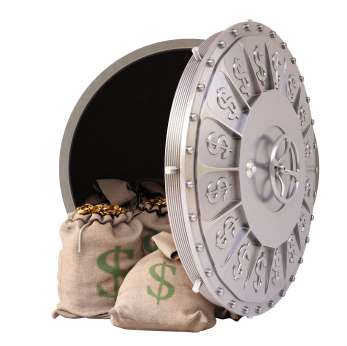
The date is July 2, 1991. Piled upon rectangular tables are stacks of United States dollars. The stacks reach three feet high and completely cover the table’s surface. The tables extend from one side of the meeting room to the other, half the distance of a football field. The dollars make a level surface for most of the distance, except for the occasional hill, and a speaker’s podium in the center.
In front of the speaker’s podium on the ground, are bags stacked one upon another reaching higher than the tops of the tables. These bags bear the markings of the Federal Reserve and although nothing green can be observed, they leave no doubt that they are filled with United States currency.
The occasion is a press conference announced by the United States Customs Service in Miami, to herald the seizure of one of the largest amounts of drug dollars ever seized in the United States from the cocaine cartels. The total amount from this seizure was $22 million, all in United States currency. But this money was not destined to be placed aboard a Lear jet and flown to Columbia. Instead, it was intended for a highly sophisticated and secretive system for laundering drug dollars, which has only recently been recognized as a serious threat to both the United States and Colombia.
For many years, the American anti-drug rallying cry has been the “war on drugs,” with Colombian cocaine being the chief target. In the mid 1980s, however, the United States government widened the conflict by also targeting drug proceeds, and introducing anti-money laundering statutes as heavy-duty weapons into the conflict. One target of these weapons was the billions of dollars generated annually by the Colombian cocaine cartels, and introduced into its principal laundering vehicle – the Colombian Black Market Peso Exchange (BMPE).
This article undertakes to reveal how the Black Market Peso Exchange came to be. It is a two-part series. Part Two discusses the mechanics of the Black Market Peso Exchange.
The BMPE, as used by the cartels, is the single most efficient and extensive money laundering system in the Western Hemisphere. Back in 1999, the United States Department of the Treasury’s Financial Crimes Enforcement Network warned that, “this underground financial and trade financing system is a major – perhaps the single largest avenue for the laundering of the wholesale proceeds of narcotics trafficking in the United States.”
The American cocaine industry has been estimated to be over a fifty billion dollar a year industry. As cocaine enters the United States through major source cities and makes its way to Main Street USA, the money trail follows a reverse flow, ending in major cities like Los Angeles, New York City, and Miami. In these cities, hundreds of thousands of bills in five, ten, and twenty-dollar denominations accumulate, awaiting their next change of ownership. The irony is that although this money belongs to the Colombian cartels, most of it will never leave the United States.
The money that accumulates in the United States belongs to the cartels. The cartels that have produced and shipped the cocaine now await the money that they are owed. The cartels need this money in Colombia in order to pay their operating expenses. Since it would be difficult to pay their operating expenses in American dollars, their ideal situation is to receive the money in Colombian pesos. The great dilemma for the cartel is how to get their million dollars located in Miami to Cali or Medellin, and convert it into pesos.
While the cartel was confronting this dilemma, there were many Colombian people that needed dollars in the United States. In 1967, out of fear that Colombia’s dollar reserves were depleting, resulting in inflation, the Colombian government passed Decree Law # 444. Decree Law # 444 limited Colombians in the amount of United States dollars they could purchase annually from the National Bank (the only legal source of United States dollars in Colombia).
Decree Law # 444 also required purchasers to pay a premium exchange rate to obtain dollars from the government. Finally, Decree Law # 444 required importers to disclose the types of items being imported, which resulted in purchasers making additional payments of taxes and duties to the government. This law eventually led to the creation of the Black Market Peso Exchange.
Originally, the BMPE in Colombia served as a way to send money to friends and relatives living in the United States, as well as a way for Colombians to accumulate stable United States dollars as a hedge against an unstable Colombian Peso. During this period, dollars were purchased by black marketers from American tourists who were visiting Colombia or from American businessmen. These tourists and businessmen were paid a premium above the official government exchange rate. The black marketers then sold these dollars to their Colombian clients at a percentage above the rate they paid, which was still cheaper than the government price of the dollars at the national bank.
During the 1980s, two groups came together – the black marketers who needed dollars in the United States and the cartel families who needed pesos in Colombia. The result was the BMPE. The BMPE has been estimated to handle up to eighty-five percent of the money owed to cartels from the sale of cocaine in the United States. The billions of drug dollars from nationwide drug sales that flow back to major cities like Miami, New York, and Los Angeles do not remain idle and accumulate. Instead, they are used to purchase machinery, electronic items, and other equipment for Colombian business and industry.
In accordance with Circular 230 Disclosure













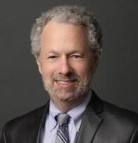
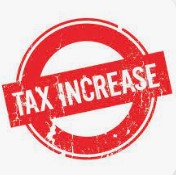
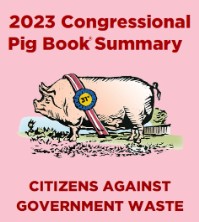

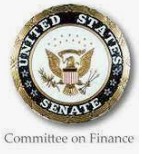
Recent Comments